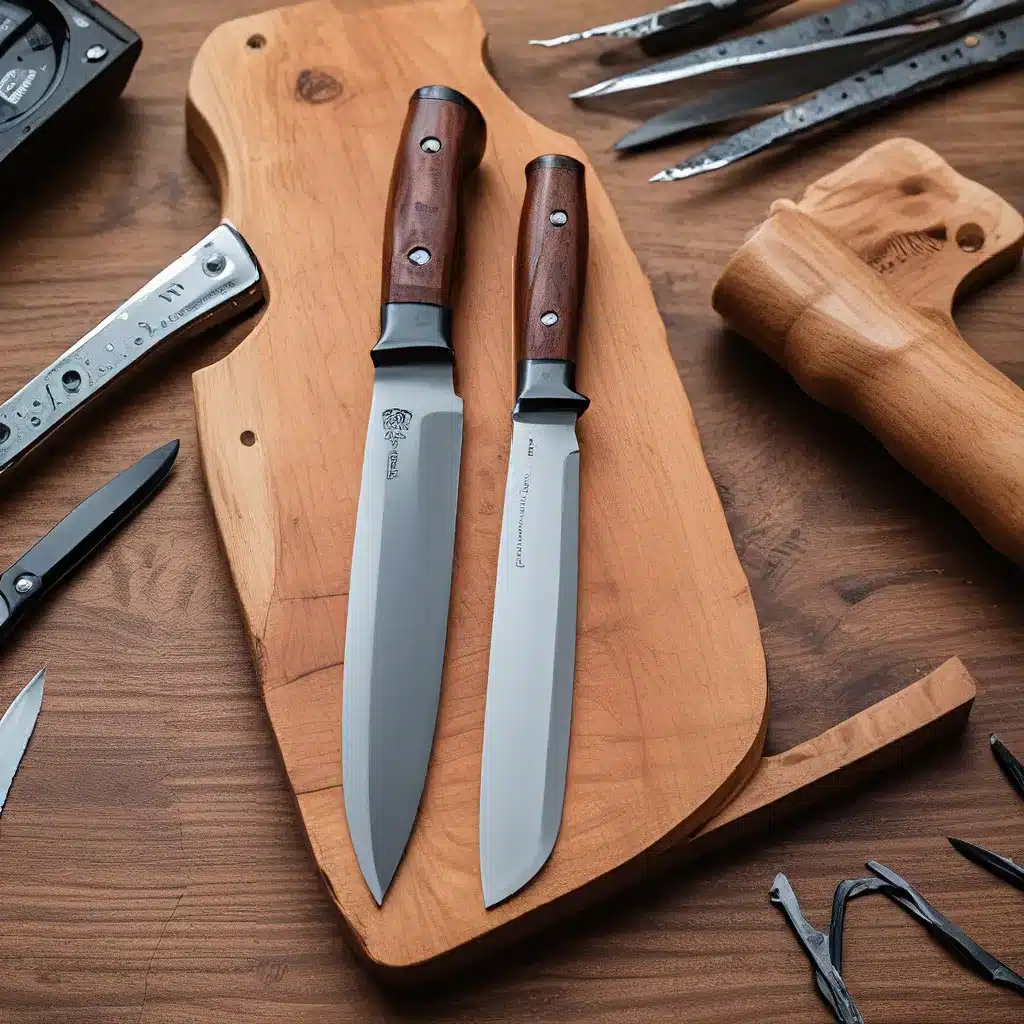
As someone who loves wielding a razor-sharp blade in the kitchen, I’ve learned that the key to getting the most out of your knives is proper care and maintenance. It’s a journey that’s equal parts science and art, with plenty of nuance and debate along the way. But fear not, my fellow knife enthusiasts – I’m here to share my hard-earned knowledge and hopefully save you from a few nicks and cuts.
Unlocking the Secrets of Sharpening
Ah, the elusive art of sharpening – it’s the holy grail for any serious cook or knife aficionado. From the moment I first picked up a whetstone, I’ve been on a quest to master the perfect edge. And let me tell you, it’s not as straightforward as it might seem.
One of the first things I learned is that diamonds are not forever when it comes to sharpening stones. As the folks over at Wicked Edge pointed out, these powerful abrasives do have a finite lifespan. They may start off blazing hot, but over time, the diamonds can become dull and lose their edge-shaping prowess.
So, what’s a sharpening enthusiast to do? Well, the key is to understand the nuances of different sharpening media. Waterstones, for example, are a popular choice for their ability to create a razor-sharp edge. But they also require a bit more care and maintenance, as they can dish and wear down over time. Ceramic stones, on the other hand, tend to be more durable but may not provide quite the same level of bite.
And let’s not forget about the humble steel – the unsung hero of the sharpening world. As the eGullet forums suggest, a good quality steel can work wonders for keeping your blades in tip-top shape between more thorough sharpenings. It’s all about finding the right combination of tools and techniques that work for you and your knives.
Mastering the Art of Honing
But sharpening is only half the battle – honing is the other crucial piece of the puzzle. And let me tell you, it’s not as simple as just dragging your blade across a steel a few times. Oh no, my friends, there’s a precise science to proper honing.
The key is to find the right angle and maintain it consistently. As the experts at Knifewear point out, this can vary depending on the type of knife you’re working with. Japanese blades, for example, often call for a more acute angle compared to their Western counterparts.
And don’t forget, honing is not a one-size-fits-all affair. The number of strokes, the pressure you apply, and even the direction you work in – it all matters when it comes to keeping your knives in peak condition. It’s a delicate dance, to be sure, but one that’s worth mastering if you want to keep those blades slicing and dicing with precision.
Unlocking the Power of Proper Storage
Now, let’s talk about something that’s often overlooked in the world of knife care: proper storage. It’s not just about keeping your blades out of harm’s way (though that’s certainly important), but also about preserving their integrity over time.
Herman Knives has a whole line of specialty knife blocks and sheaths designed to keep your precious blades safe and secure. But beyond that, it’s all about creating the right environment. Humidity, temperature, and even exposure to certain materials can all have a profound impact on the longevity of your knives.
And let’s not forget about magnetic strips – they may seem like a convenient solution, but they can actually put a lot of stress on your blades over time. It’s all about finding the right balance between accessibility and protection.
Dealing with Damage and Discoloration
Now, let’s face it – even the most diligent of us will inevitably encounter the occasional mishap. Whether it’s a wayward slice through a bone or a stubborn stain that just won’t budge, dealing with knife damage and discoloration can be a real headache.
But fear not, my fellow culinary warriors – there are strategies to tackle even the toughest of challenges. Identifying the root cause is key, whether it’s a dull edge or a reaction with certain foods. And when it comes to stubborn stains, a little elbow grease and the right cleaning solutions can work wonders.
Of course, prevention is always better than cure, so it’s important to develop good habits from the start. But even the most seasoned knife enthusiast can’t avoid the occasional mishap. The key is to approach it with a calm, methodical mindset and a willingness to experiment.
Embracing the Journey of Knife Care
At the end of the day, caring for your knives is a never-ending journey. There’s always more to learn, more techniques to master, and more ways to coax the absolute best performance out of your blades.
But you know what they say – the more you put into it, the more you get out. And trust me, the sense of satisfaction you’ll feel when you slice through a tomato with effortless ease or watch your blade gleam under the kitchen lights – it’s a feeling that’s hard to top.
So, my fellow knife enthusiasts, let’s embrace the challenges and the nuances of this noble pursuit. Let’s sharpen our skills, hone our techniques, and unlock the full potential of our beloved blades. After all, the journey is half the fun, and the rewards are oh-so-sweet.


